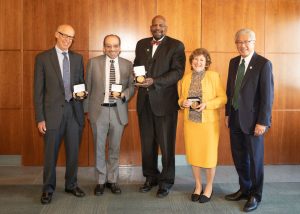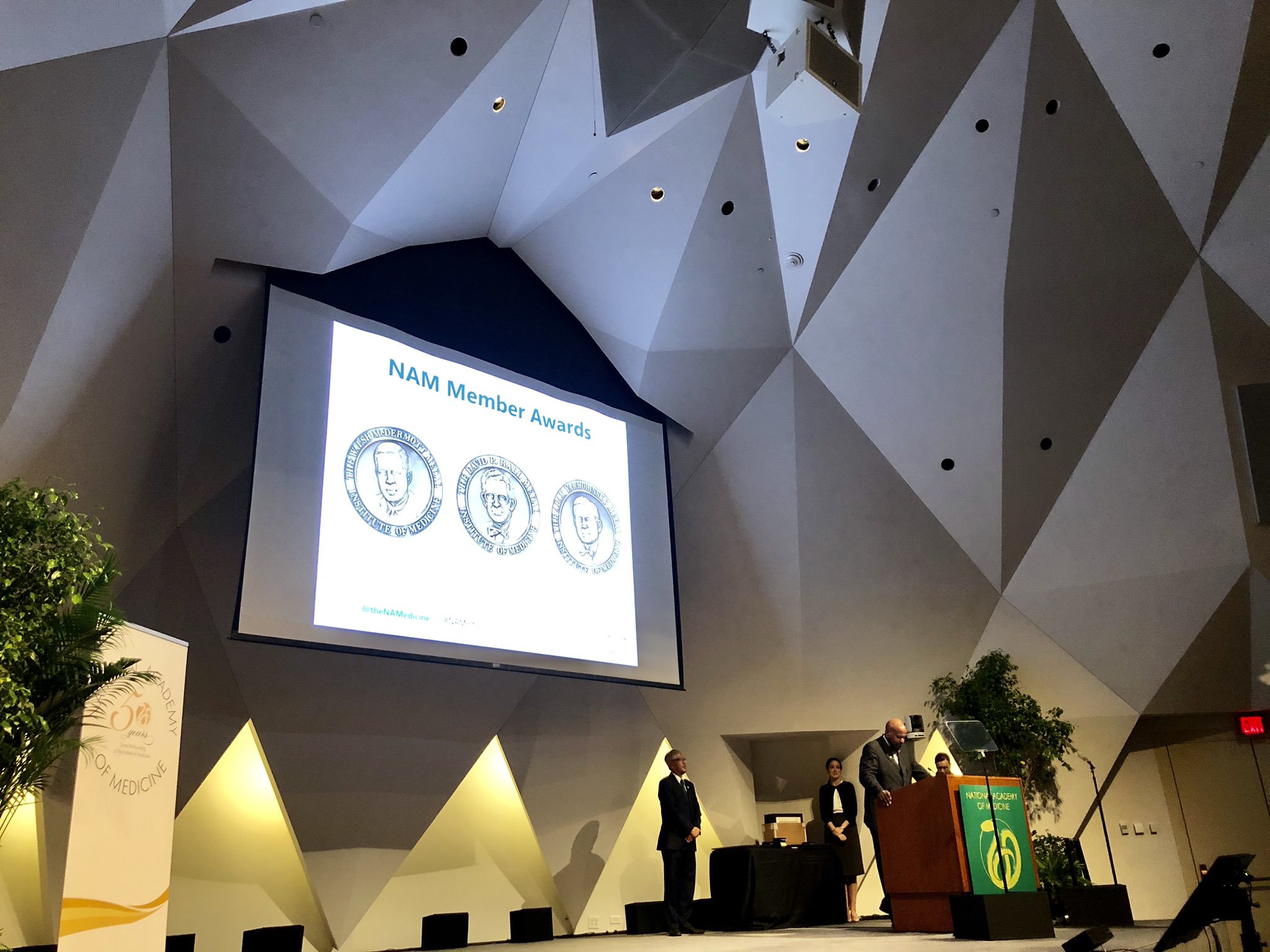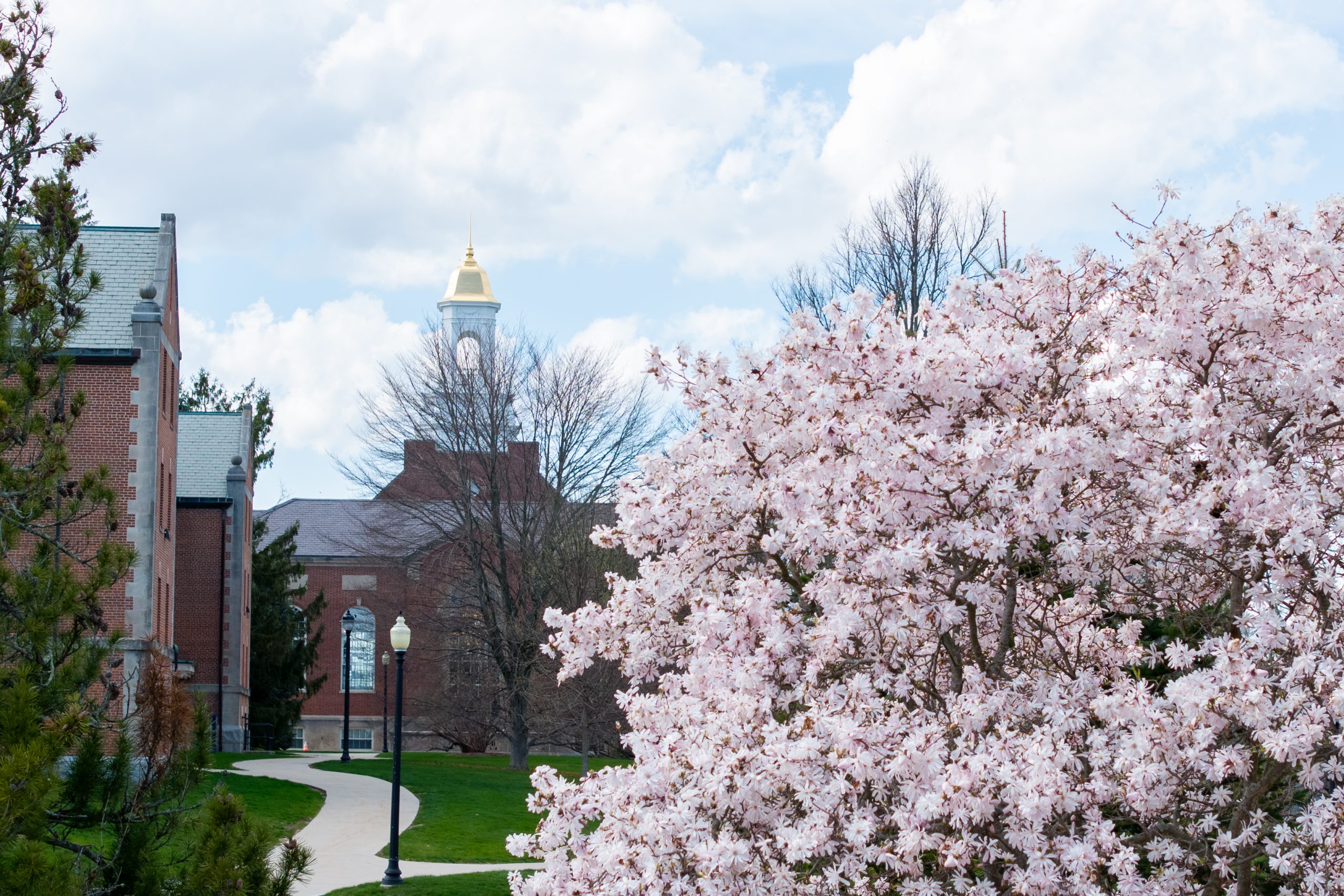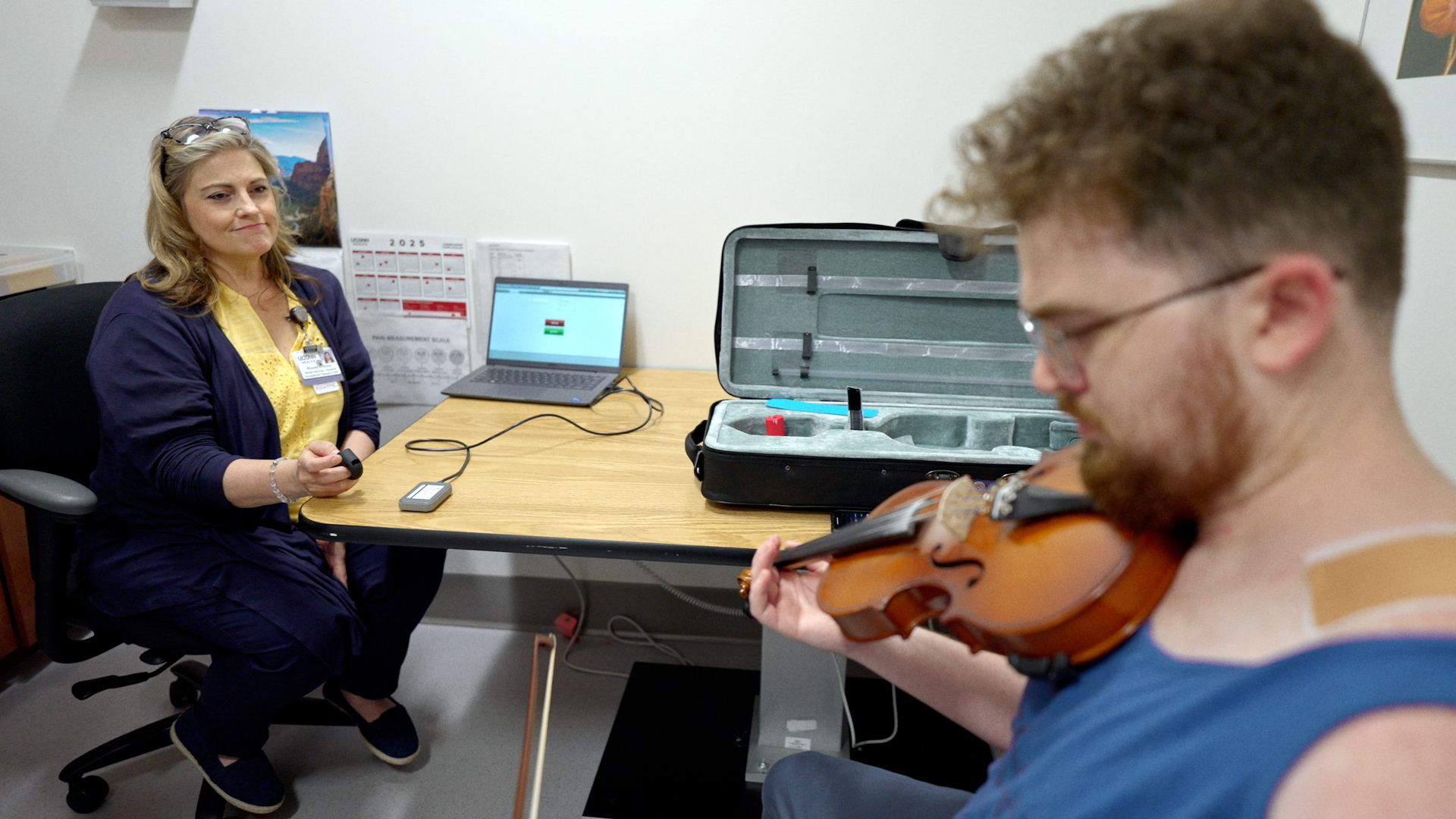The National Academy of Medicine (NAM) honored Dr. Cato T. Laurencin, University Professor at UConn and Albert and Wilda Van Dusen Distinguished Endowed Professor of Orthopaedic Surgery at UConn Health, for his outstanding service on Oct. 21. Laurencin received the Walsh McDermott Medal, which is awarded to a member for distinguished service to NAM over an extended period.
NAM also honored David Savitz, professor of epidemiology, obstetrics and gynecology, and pediatrics at Brown University; and Gail Wilensky, economist and senior fellow at Project HOPE.

“These distinguished members represent the true spirit of dedication through their decades of service to NAM,” said National Academy of Medicine President Victor J. Dzau. “The diverse perspectives they bring to their activities have helped shape sound policies, inform public opinion, and advance knowledge about some of today’s most complex issues in health and medicine. We are delighted to honor them for their leadership and their mentorship to so many.”
Since his election to NAM in 2004, Laurencin has served on more than 20 committees and has held several leadership positions, including section chair of NAM’s membership committee. A devoted mentor and champion of early career and underrepresented minority scientists, Laurencin is currently a member of the Advisory Committee for New Voices in Sciences, Engineering and Medicine.
Laurencin is known internationally for his research in biomaterials, drug delivery, nanotechnology, stem cell science, and a field he has pioneered, regenerative engineering. In 2012, his breakthrough work on engineering the anterior cruciate ligament was highlighted by National Geographic Magazine in its “100 Discoveries That Have Changed Our World” edition. Laurencin is the recipient of the National Medal of Technology and Innovation. Laurencin was also elected to the National Academy of Engineering in 2011.
He is the first to receive both the Simon Ramo Founders Award from the National Academy of Engineering and the Walsh McDermott Medal from the National Academy of Medicine. As a practicing orthopedic surgeon and an engineer, he has brought a unique multidisciplinary perspective and innovative design and systems thinking approaches to all activities.
The National Academy of Medicine, established in 1970 as the Institute of Medicine, is an independent organization of eminent professionals from diverse fields including health and medicine; the natural, social, and behavioral sciences; and beyond. It serves alongside the National Academy of Sciences and the National Academy of Engineering as an adviser to the nation and the international community. Through its domestic and global initiatives, the NAM works to address critical issues in health, medicine, and related policy and inspire positive action across sectors. The NAM collaborates closely with its peer academies and other divisions within the National Academies of Sciences, Engineering, and Medicine.



